XC Falcon: The Rise and Fall of Ford's 1970s Super Coupe

Ford’s XC Falcon 500 GS Hardtop at its formidable peak with Allan Moffat on his way to an historic victory at Bathurst in 1977. These big V8 coupes looked so tough in Group C trim. They would have looked just as good running 200 mph on the high banks of Daytona in NASCAR racing.
1977 was Ford Australia’s greatest motor racing season, when it backed a formidable two-car Falcon Hardtop attack which demolished arch rival Holden and claimed the first 1-2 formation finish at Bathurst. However, that result so angered GM-H that it retaliated with its all-conquering LX Torana A9X.
Had the Moffat Ford Dealers Team not been so successful in 1977 it is unlikely The General would have gone to all the trouble and expense of developing the A9X, which instantly cured the numerous weaknesses of the 5.0 litre V8-powered LH Torana L34. The A9X proved so dominant it drove Ford right out of the sport.
Even so, 1977 was the competitive high point for the venerable Aussie Falcon Hardtop, which had started competing in 1973 in XA GT guise before updating to the XB GT in 1974 and finally the XC 500 GS in 1977.

Give ‘em the old 1-2! Colin Bond led Allan Moffat in the early laps of the 1977 Bathurst 1000, as the big Fords set a merciless pace which broke the back of the Torana challenge by half distance. Ace co-drivers Alan Hamilton and Jacky Ickx maintained the pressure during their stints.
1977: The Bird of Prey swoops
The Torana L34’s incredible run of success since its 1974 debut came to an abrupt end in 1977, when Allan Moffat shocked the touring car world by convincing HDT’s long serving race and rally ace Colin Bond to switch brands and join him in a two-car Falcon super team. The financial and technical support from Ford and its dealer group was rumoured to be $1 million (about $4 million today).
The 1977 Australian Touring Car Championship (ATCC) comprised 11 rounds featuring a mix of sprint and endurance races, with the prestigious Bathurst 1000 a stand-alone event. The Moffat Ford Dealers Team gave one of the greatest demonstrations of peerless vehicle preparation, race driving and team work.
Starting the year with XB GT Hardtops, expertly prepared under US race engineer/tactician Carroll Smith, the Moffat cars were simply too good for the L34 Toranas which due to savage budget cuts had seen crucial factory development work grind to a halt.

The 1977 Bathurst-winning Falcon barrels down the Mountain leaving the new A9X Toranas in its wake. Moffat’s co-driver, multiple Le Mans winner Jacky Ickx, was mighty fast but burned up too much of the front brake pads, leaving Moffat with his middle pedal on the floor in the final laps.
Moffat and Bond dealt a crushing blow, storming away to 1-2 finishes in four of the first five rounds, before Bond turned the tables on his boss at Adelaide’s round six. Moffat suffered his only retirement at Lakeside’s round seven due to engine trouble, which allowed Peter Brock to finally break the Ford stranglehold and defeat Bond.
With four rounds remaining, there was a long 10-week break between the final sprint round and the first of four endurance events at Sandown. In that time, the leading Holden teams hurriedly made the switch to the new LX Torana A9X, which had been rushed into service with much needed improvements over the L34 in the areas of brakes, drive-train, suspension, engine induction and cooling.
It was also during that lengthy break that the Moffat Ford Dealers Team updated its pair of XB GTs to the latest XC model specs, which was the first Falcon range since the 1965 XP series not to feature a GT in its line-up.

The most famous Bathurst finish. The Moffat Ford Dealers Team XC Falcons of Moffat and Bond crossed the line this far apart after 163 laps of the most devastating display of Ford firepower seen on Mount Panorama. GM-H bosses were tasting bile and hell bent on revenge. They got it, too. Image: www.fordfalcons.com.au
Enter the XC 500 GS
The XC racing Falcons carried the less evocative ‘500 GS’ name tag, but Moffat’s facelifted Hardtops would build on the winning momentum established by the XB GT by orchestrating the most memorable win in Bathurst history.
Ford had introduced the XC Falcon range the previous year (July 1976) with the hottest Hardtop model being the 500 GS with 5.8 litre V8 option, so naturally it was keen to capitalise on any race track success as soon as possible. CAMS officially recognised the transition from XB to XC from July 1, 1977. The change of model was limited only to body and trim variations. The previous GT model designation was replaced by 500 GS in recognition documents.
In pure racing terms, the XC was basically a face-lift of the XB GT and original XA GT models, so mechanically it could continue to benefit from the XA’s mechanical package which was based on the stillborn XA GT-HO Phase IV.

Back in the good old days, post-race scrutineering of the top three Bathurst placegetters was carried out at a service garage in the township. Here the Moffat team’s chief engine builder Peter Molloy prepares the winning Falcon for inspection, as British ace Derek Bell looks on. The multiple Le Mans winner, on his first visit to Bathurst, had just won the 2.0 litre class with Gary Leggatt in an Alfa.
Allan Moffat’s 1973 Bathurst-winning XA GT Hardtop had featured a more modified version of the Phase IV’s Boss 351-derived 5.8 litre Cleveland four-bolt V8 engine, including its hand-made exhaust extractors, harmonic balancer, dual-point distributor, heavy duty cross-flow radiator and seven-blade fan. By 1977 power outputs were exceeding 450 bhp.
It also had a choice of close or wide-ratio 31-spline top loader gearboxes, 3.5-inch tailshaft, nine-inch diff with 31-spline axle assembly/panhard rod/Detroit Locker, rear disc brakes (approved from Bathurst 1973), a choice of diff ratios and a big 36-gallon (165-litre) long range fuel tank. The fitting in-plant of larger rear wheel housings on race-only rolling shells, to provide enough clearance for the huge rear tyres used in racing, was adopted by Ford during the XB era.
Even so, a simple facelift to the latest XC bodywork and interior would not have been enough for the venerable Hardtop to stay one step ahead of its new LX Torana A9X opposition. Lessons learned during several years of racing the XA and XB GTs gave Ford the expertise it needed to make the XC an even tougher competitor.

Tormenting the snake. Moffat leads Bond through Murray’s Corner in their ‘new’ Falcon Cobras during practice for the 1978 Bathurst 1000. Although the cars looked sensational in the white and blue corporate war paint, they were humiliated by the top A9X Toranas in the race.
Henry builds an Evo
CAMS approved Ford’s request for an ‘evolution’ of the new 500 GS which incorporated a package of upgrades mostly designed to improve race durability. Not surprisingly, this upgrade was valid from September 1977 - just in time for Ford’s first confrontation with the new A9X Toranas at Sandown’s ‘Hang Ten 400’ endurance race.
This evolution package, which it was claimed in the CAMS documents were ‘now fitted as standard equipment to Hardtop Model Falcon 500 GS’ (really?) included new front and rear spoilers, a rigid cross-brace between the spring towers, welded reinforcement plates within the towers, a steering idler arm support bracket, twin-row water pump and crankshaft pulleys incorporating an additional drive belt from the water pump to the crankshaft and a gearbox oil cooler.
The XC also carried over the shorter upper control arms and stiffer lower arm radius rod suspension bushes which had been homologated as a ‘Production Variant’ for the XB back in July 1976. These shorter top arms, which shared the same dimensions as the standard XC production items, allowed extra wheel and tyre clearance and greater degrees of negative camber for the race cars.

Ford was keen to promote the Cobra racing heritage at Bathurst in 1978, providing numerous showroom examples for promotional purposes prior to the start and for use as official course cars.
The XC 500 GS Hardtops debuted at Sandown's Hang Ten 400, which that year doubled as both the 400 km opening round of the endurance-based Championship of Makes (CoM) and round eight of the ATCC.
The new Torana A9X finished an impressive 1-2 first time out. Although the Moffat team’s niggling problems at Sandown made the new Toranas look stronger than they actually were at that stage, there was no doubt the Ford boys had been rattled by what they saw.
Although brand new and lacking in development time, the A9X with its stronger drivetrain, rear disc brakes, electric engine cooling fan and power-producing ‘cowl induction’ bonnet scoop was clearly a potent package that was only going to get faster.
There was only a three-week break between Sandown and Bathurst but Ford was determined to ensure its teams had everything they needed to topple the Toranas at the biggest and most important race of the year.

After pole sitter Peter Brock fluffed the start in his HDT Torana A9X, Moffat and Bond led the huge field into the first turn at Bathurst in 1978. However, the works Cobras were soon in strife. Bond dropped several laps changing a gearbox before retiring with engine trouble. Moffat led early but suffered a refuelling fire, before also being forced out by engine failure at half race distance.
Ford quickly lodged an amended set of homologation papers with CAMS which requested another evolution, clearly inspired by the A9X. In that document it was claimed that ‘the following items are now fitted as standard equipment to Falcon GS Hardtop sedans with effect from Ist October 1977’ (really?) with the intention of running them at Bathurst on October 2.
This included a reverse-facing or cowl induction bonnet scoop, an electrically-powered twin thermatic fan kit consisting of two large 12-inch diameter fans, plus air ducting to improve cooling of the front disc brakes.
Although Ford planned to use this second evolution at Bathurst, and Ford teams even arrived at Bathurst with the bonnet scoops and other equipment fitted, CAMS ordered that they be removed as they had no proof that the new components had been produced in sufficient numbers to be eligible. Not that it mattered, because the Moffat team still ran away with the race.

Queensland’s Dick Johnson was a rising star in the Ford ranks when he teamed with Aussie international Vern Schuppan at Bathurst in 1978. Johnson’s XC Hardtop adopted a variation of the Cobra paint scheme, with white stripes on blue. Johnson/Schuppan finished fifth in the race, 10 laps behind the winning Brock/Richards Torana.
This second evolution was made valid from 17th October 1977, allowing Ford teams to use the new equipment to good effect in the remaining rounds of the ATCC in which Moffat and Bond finished a resounding 1-2.
Naturally, after such a crushing season, there was strong interest from private teams in racing XC Falcon Hardtops. So in December 1977, Ford built a one-off batch of 13 XC Hardtops specifically for racing, equipped with the big rear wheel housings and all body and mechanical upgrades approved in the September and October evolutions.
The design and construction of these 13 cars would form the basis of the special build of 30 Bathurst Cobras six months later in July 1978. Today those 13 cars are often referred to as the ‘Claytons Cobras’ or ‘Pre-Cobras’ by enthusiasts.

Like Moffat, Ford stalwart Murray Carter raced Falcon Hardtops right through the 1970s. The popular veteran joined with Kiwi co-driver Graeme Lawrence to finish a well-deserved third outright at Bathurst in 1978 with backing from Melbourne Ford dealer Brian Wood. Behind is the rapid Ford Escort RS 2000 that Wood also backed, which Rod Stevens and Bill Evans drove to victory in the 2.0 litre class.
1978: The Snake Pit
As soon as the 1978 season got underway, Ford’s main strike force - the Moffat Ford Dealers Team - was plagued by engine unreliability, as the venerable 351 Cleveland V8s were being revved harder and harder (try 7400 rpm!) as they struggled to keep pace with the Toranas.
Beyond the usual wet sump-related oil surge, another major weakness emerged in the Clevo’s valve train. The pressed-steel rocker fulcrums, which were never designed to operate at such sustained high rpm, would often fracture and allow the pushrods to punch right up through them. The A9X used roller rockers, a gift from the L34 days.
Ford’s venerable top loader gearboxes were also failing, as the higher revs caused excessive heat that even the best lubricants and oil coolers could not tame. Peter Brock, on his return to a new-look Holden Dealer Team under John Sheppard, claimed his second ATCC title in the A9X.

Start of the 1979 Bathurst 1000 and pole man Peter Brock leads an angry pack of A9X Toranas and Moffat’s XC Hardtop. Brock and co-driver Jim Richards raced away to a demoralising six-lap victory ahead of seven other A9X Toranas. By comparison, only one Falcon finished the race, many laps down. GM-H joined Ford in quitting the sport soon after, as it could see no value in Holdens only beating other Holdens.
Meanwhile, the all-new XD Falcon was due for release in 1979 so Ford was keen to complete a successful model run-out of the XC. This included the slow-selling Hardtop, which even in optional 5.8 litre V8 form had nothing like the cache of earlier GT versions.
Hence the Falcon ‘Cobra’ was born. Credit goes to Henry Ford’s grandson Edsel Ford, who at the time was working as assistant managing director of Ford Australia. In typically brash American style, Edsel figured such a revered name like Cobra - as used on the Ford V8-powered sports cars and Mustangs developed by Carroll Shelby in the 1960s - would be just the thing to inject some excitement and clear Ford’s remaining stocks (about 400) of XC Hardtops. Ford had already used a similar Cobra theme in the US on its unloved Mustang II.
It was inspired marketing, even though many die-hard muscle car fans were disappointed the car’s mechanical specs remained standard Ford fare. They saw it more as a cynical sales exercise - yet they were all snapped up faster than you could write a cheque for one!

Moffat’s final season in a Ford was without factory backing. Here his British co-driver John Fitzpatrick muscles the big XC coupe through Murray’s Corner at Bathurst in 1979. To suffer yet another engine failure, this time while running in second place less than 30 laps from the finish, was a cruel blow.
The Falcon Cobra (Option 96) was built in a single production run of 400 units, available with either the 302 cid or 351 cid V8 engine and various options. Of most importance in the context of this story, 30 of the 400 cars were equipped with ‘Option 97’ to meet Bathurst homologation rules.
There was plenty of noise made in the press at the time about these 30 ‘Bathurst’ Cobras featuring a swag of new performance parts. In reality, Option 97 simply carried over all the modifications and components which had been integrated in the XC Falcon since its racing debut at Sandown back in September 1977.
In fact, Option 97 required only three additions to existing homologation papers for the XC 500 GS. This amendment, validated by CAMS from September 1, 1978, recognised the XC Falcon GS variant ‘now known as the Ford Cobra’ and included the addition of Scheel front seats, one-piece alloy wheel (Globe Bathurst type) and a revised front spoiler.

Colin Bond continued to race an XC Hardtop in 1979, following the disbanding of the Moffat Ford Dealers Team. Bondy’s car was backed by prominent Sydney car dealer Thomson Ford and with Queensland veteran John French as co-driver they formed a strong Bathurst pairing. Sadly the car lasted only 23 laps before the engine failed.
The new Ford Dealers Team Cobras of Moffat and Bond looked magnificent as they rolled out at Sandown for the 1978 Hang Ten 400 in September; the first of five long distance races which made up the 1978 Australian Championship of Makes.
However, under those eye-catching white and blue paint schemes, they were not new cars at all; just the same two Hardtops which had hammered the L34 Toranas in 1977 before being pulverised by the A9X Toranas in 1978.
The new coat of paint was not a good omen, as the highly stressed big birds continued to suffer engine and transmission failures. Moffat and Bond both failed to finish at the Sandown 400 and Bathurst 1000. Bond also retired at Surfers Paradise with Moffat finishing way down the order. The only bright spot was Bond’s narrow win in Adelaide, limping home with a sick engine and worn-out tyres. Not surprisingly the embattled works Cobras skipped the final round at Calder.

XC Falcon Hardtops attracted a number of Ford loyalists including Garry Willmington. At the 1979 Bathurst 1000 his car displayed another variation of the Cobra paint scheme, this time with green-stripes-on-black. Unfortunately the big coupe retired after 95 laps. Interestingly, Willmington’s co-driver was John Wright - the other JW!
Holden had exacted maximum revenge. In fact, Holden’s response had been so overwhelming that Ford immediately announced its withdrawal from the sport again, leaving Moffat and other Falcon drivers to fight for themselves against a far superior opponent in 1979. The Ford Dealers Team was disbanded and Moffat and Bond went separate ways.
With sponsorship from Federation Insurance and RJ Reynolds (Camel Filters) Moffat tried his best to fly the beleaguered Ford flag in what was now being referred to as ‘Formula Torana’ as there were few Falcons competing by then.
Although his XC Hardtop looked stunning in sinister black/yellow/orange/red war paint, it continued to be haunted by mechanical failures. Another blown engine while running second at Bathurst on lap 136 (of 163) was the last straw. Moffat’s future lay with Mazda’s RX-7.

The 1979 Bathurst 1000 was the last appearance of John Goss in a Falcon Hardtop. The Tasmanian was a Bathurst front runner in the first XA GT coupe, claiming pole position in 1973 before winning in 1974 with Kevin Bartlett. Goss then started to concentrate on open-wheeler racing and his annual Bathurst outings suffered from poor reliability. Here Goss is at the wheel of the Cobra he shared with Le Mans veteran Henri Pescarolo. Sadly, it failed to finish.
New rules for 1980 encouraged teams to switch to the ‘new look’ VB Commodore and XD Falcon by hobbling the performance of their ‘old look’ cars. The Torana A9X was officially dead and the mighty Falcon Hardtop’s seven-year touring car career had also reached its end.
The XC Falcon may have finished the Hardtop’s illustrious racing career with a whimper, but memories of it performing at its formidable peak will forever be etched in our minds. The first 1-2 formation finish at Bathurst will see to that.

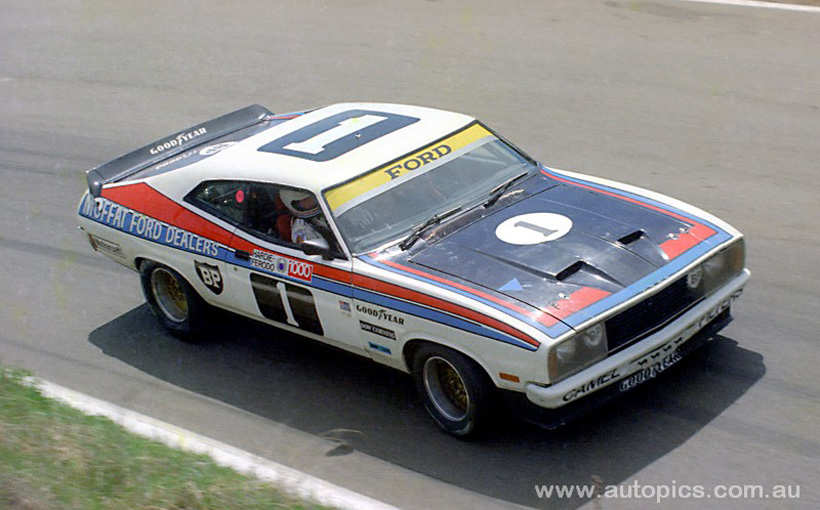

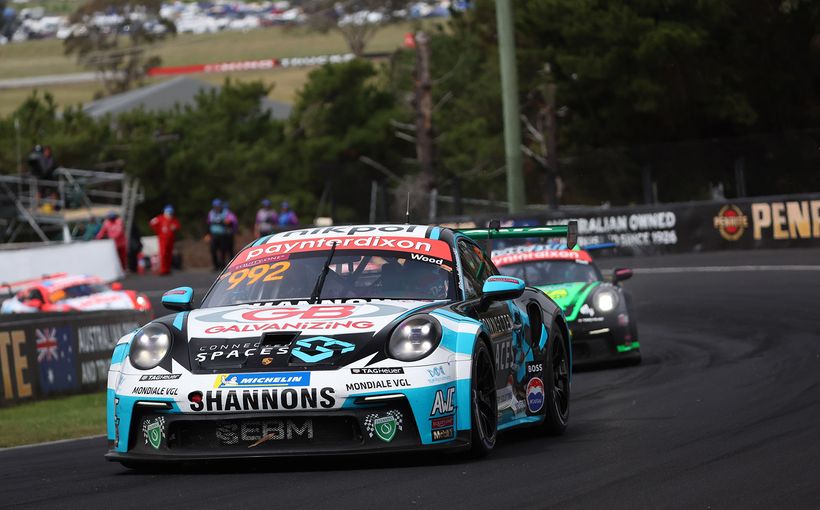

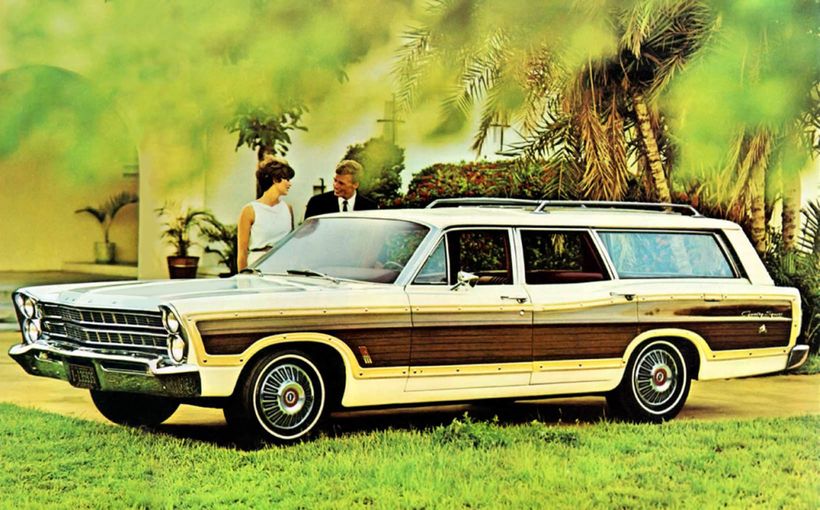
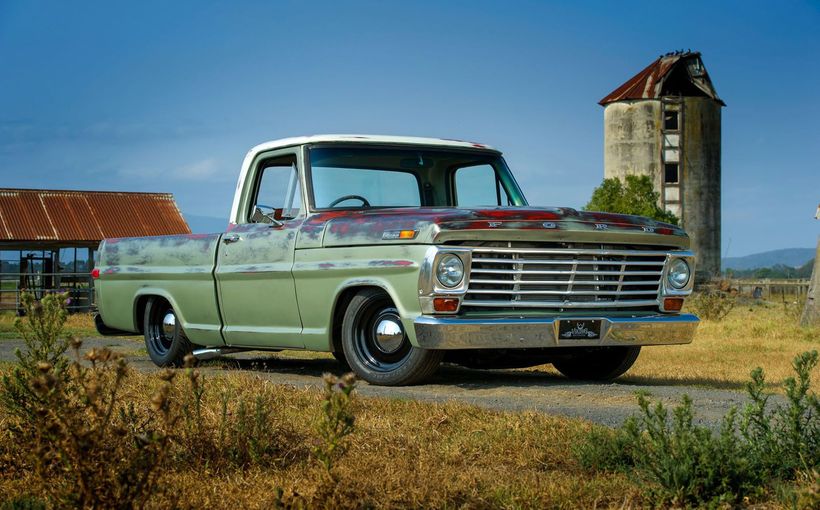
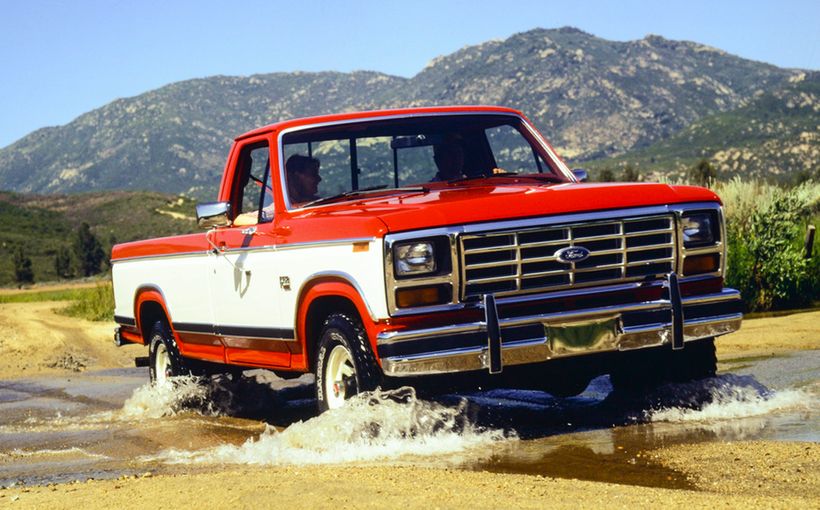
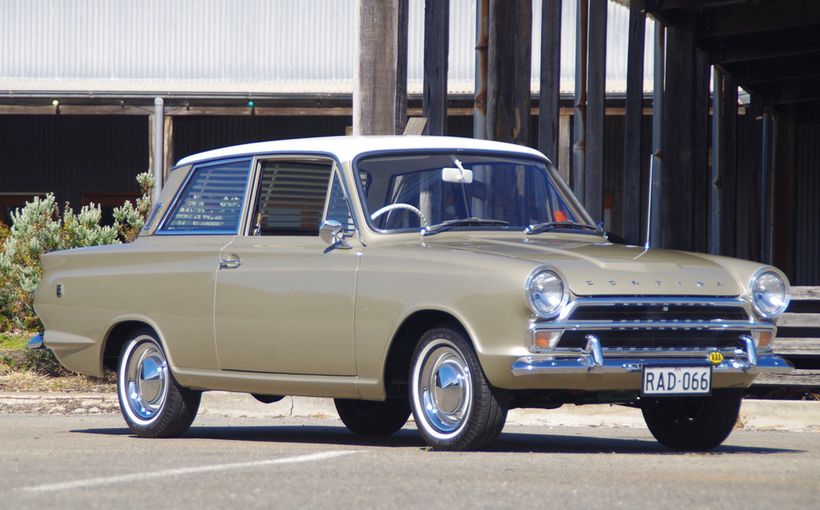

Comments
4bait
Thats a great looking Corvette Stingray. Love the curves on these
I would be pretty happy seeing that in the driveway each day. thanks so much for Showing it.
We have an Eh holden in the shannons show, If you have time to visit the link and click the vote button that would be fantastic
Cheers Andy
https://www.shannons.com.au/club/show-n-...
Lethl_Z
Stunning Stingray, love it!
You have a beautiful garage 😍
I've just entered my Nissan 370z in the 2020 Shannon's Show and Shine! Is there any chance you could possibly hit the green VOTE button on my entry at the link below? Your support would honestly mean the world to me and I appreciate your time! 😊🤞
https://www.shannons.com.au/club/show-n-...
Stay safe and best regards,
Scott
BeccaBrown
Hey there,
I absolutely love your garage.
Wow what an amazing job you have put into your Awesome automobile. A credit to you, one to be very proud to have parked in the garage.
Simply spectacular.
When you get a moment you might want to check out my Holden Statesman in the Australian category by clicking on the link below.
If you want too I’d love for you to give her a vote in the Shannon’s Show & Shine competition.
Greatly appreciated!
Happy motoring.
Good luck if you’re entered.
Please click on the link below and the hit the green vote button on her entry.
TIA Bec
https://www.shannons.com.au/club/show-n-...
Dangercain
Corvette hit nail on the head - magic!
Corvette
magic.